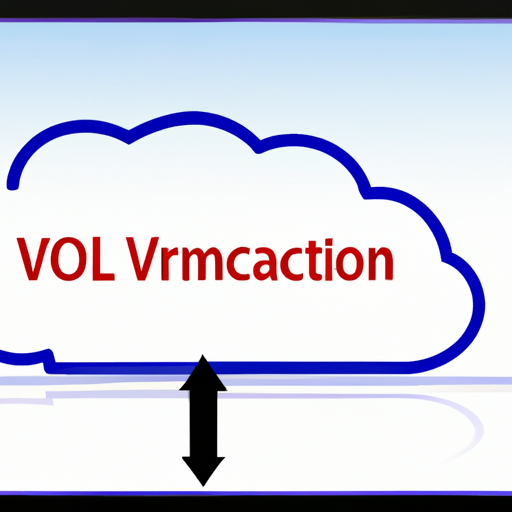What is Wireless WAN?
-
Table of Contents
“Connecting the World Without Wires – Wireless WAN”
Introduction
Wireless WAN (Wide Area Network) is a type of network that uses wireless technology to connect computers and other devices over a wide geographic area. It is a type of network that is used to connect two or more locations that are not physically connected by a wired connection. Wireless WANs are used to provide access to the Internet, corporate networks, and other resources. They are also used to provide communication between remote locations, such as branch offices, and to provide mobile access to corporate networks.
Exploring the Benefits of Wireless WANs
Wireless Wide Area Networks (WANs) are becoming increasingly popular as businesses look for ways to improve their communication and data transfer capabilities. WANs are networks that span a large geographical area, such as a city, state, or even an entire country. They are typically used to connect multiple offices, allowing them to share data and resources.
Wireless WANs offer a number of advantages over traditional wired networks. For one, they are much easier to install and maintain. Since they don’t require physical cables, they can be set up quickly and with minimal disruption to existing infrastructure. This makes them ideal for businesses that need to expand their network quickly or that are located in areas where it is difficult to lay down cables.
Wireless WANs also offer greater flexibility. Since they don’t require physical cables, they can be easily reconfigured to meet changing needs. This makes them ideal for businesses that need to quickly adjust their network to accommodate new users or applications.
In addition, wireless WANs are more secure than traditional wired networks. Since they don’t require physical cables, they are less vulnerable to tampering or interception. This makes them ideal for businesses that need to protect sensitive data or communications.
Finally, wireless WANs are more cost-effective than traditional wired networks. Since they don’t require physical cables, they can be set up and maintained at a fraction of the cost of a wired network. This makes them ideal for businesses that need to keep their costs down while still maintaining a reliable network.
Overall, wireless WANs offer a number of advantages over traditional wired networks. They are easier to install and maintain, more flexible, more secure, and more cost-effective. For these reasons, they are becoming increasingly popular among businesses of all sizes.
Understanding the Different Types of Wireless WANs
Wireless Wide Area Networks (WANs) are an increasingly popular way to connect multiple locations and devices over a wide area. WANs provide a secure, reliable, and cost-effective way to connect multiple sites and devices. There are several different types of wireless WANs available, each with its own advantages and disadvantages.
The most common type of wireless WAN is cellular. Cellular WANs use cellular towers to transmit data over a wide area. This type of WAN is typically used for mobile applications, such as connecting laptops and tablets to the internet. Cellular WANs are reliable and secure, but can be expensive due to the cost of the cellular data plans.
Another type of wireless WAN is satellite. Satellite WANs use satellites to transmit data over a wide area. This type of WAN is typically used for applications that require a large coverage area, such as connecting remote locations to the internet. Satellite WANs are reliable and secure, but can be expensive due to the cost of the satellite data plans.
Wi-Fi is another type of wireless WAN. Wi-Fi WANs use Wi-Fi hotspots to transmit data over a wide area. This type of WAN is typically used for applications that require a large coverage area, such as connecting multiple locations to the internet. Wi-Fi WANs are reliable and secure, but can be expensive due to the cost of the Wi-Fi data plans.
Finally, there is the mesh network. Mesh networks use multiple nodes to transmit data over a wide area. This type of WAN is typically used for applications that require a large coverage area, such as connecting multiple locations to the internet. Mesh networks are reliable and secure, but can be expensive due to the cost of the mesh network hardware.
Each type of wireless WAN has its own advantages and disadvantages. It is important to understand the different types of wireless WANs and their associated costs before making a decision on which type of WAN to use.
How to Set Up a Wireless WAN
A Wireless Wide Area Network (WAN) is a type of network that allows users to access the internet from a wide range of locations. Setting up a Wireless WAN can be a complex process, but with the right knowledge and tools, it can be done quickly and easily. This guide will provide step-by-step instructions on how to set up a Wireless WAN.
Step 1: Gather the Necessary Equipment
The first step in setting up a Wireless WAN is to gather the necessary equipment. This includes a wireless router, a modem, and a wireless access point. The router will be used to connect the modem to the internet, while the access point will be used to provide wireless access to the network.
Step 2: Connect the Modem to the Router
Once the necessary equipment has been gathered, the next step is to connect the modem to the router. This can be done by connecting an Ethernet cable from the modem to the router.
Step 3: Configure the Router
Once the modem is connected to the router, the next step is to configure the router. This can be done by accessing the router’s web-based interface. The interface will allow you to configure the router’s settings, such as the network name, security settings, and more.
Step 4: Connect the Access Point
Once the router is configured, the next step is to connect the access point. This can be done by connecting an Ethernet cable from the router to the access point.
Step 5: Configure the Access Point
Once the access point is connected, the next step is to configure it. This can be done by accessing the access point’s web-based interface. The interface will allow you to configure the access point’s settings, such as the network name, security settings, and more.
Step 6: Test the Connection
Once the access point is configured, the next step is to test the connection. This can be done by connecting a device, such as a laptop or smartphone, to the network and attempting to access the internet. If the connection is successful, then the Wireless WAN has been successfully set up.
Setting up a Wireless WAN can be a complex process, but with the right knowledge and tools, it can be done quickly and easily. By following the steps outlined in this guide, you can have a Wireless WAN up and running in no time.
Security Considerations for Wireless WANs
Wireless Wide Area Networks (WANs) are becoming increasingly popular due to their convenience and cost-effectiveness. However, they also present a unique set of security challenges that must be addressed in order to ensure the safety and integrity of the network.
The first security consideration for wireless WANs is the use of encryption. Encryption is a process that scrambles data so that it is unreadable to anyone without the correct key. This is important for protecting sensitive data from being intercepted by unauthorized parties. It is also important to ensure that the encryption used is strong enough to prevent attackers from being able to decrypt the data.
The second security consideration is authentication. Authentication is the process of verifying the identity of a user or device before allowing access to the network. This is important for preventing unauthorized access to the network and its resources. It is also important to ensure that the authentication process is secure and cannot be easily bypassed.
The third security consideration is access control. Access control is the process of limiting access to the network and its resources to only those users or devices that have been authorized. This is important for preventing unauthorized users from accessing sensitive data or resources. It is also important to ensure that the access control system is secure and cannot be easily bypassed.
Finally, it is important to ensure that the wireless WAN is regularly monitored for any suspicious activity. This includes monitoring for any unauthorized access attempts, as well as any attempts to modify or delete data. It is also important to ensure that any security patches or updates are applied in a timely manner in order to keep the network secure.
By taking these security considerations into account, organizations can ensure that their wireless WANs are secure and protected from unauthorized access.
Troubleshooting Common Issues with Wireless WANs
Wireless WANs (Wide Area Networks) are becoming increasingly popular as a way to connect multiple locations and devices. However, as with any technology, there can be issues that arise. In this article, we will discuss some of the most common issues with wireless WANs and how to troubleshoot them.
1. Poor Signal Strength: Poor signal strength is one of the most common issues with wireless WANs. This can be caused by a variety of factors, including physical obstructions, interference from other wireless networks, or incorrect antenna placement. To troubleshoot this issue, check the antenna placement and make sure it is in line of sight with the other devices. Additionally, check for any physical obstructions that may be blocking the signal.
2. Interference: Interference from other wireless networks can cause issues with wireless WANs. To troubleshoot this issue, check the frequency of the wireless network and make sure it is not overlapping with any other networks in the area. Additionally, check for any sources of interference such as microwaves, cordless phones, or other wireless devices.
3. Security Issues: Security is an important factor when it comes to wireless WANs. To ensure the security of the network, make sure that the encryption is enabled and that the passwords are strong. Additionally, make sure that the network is not broadcasting its SSID (Service Set Identifier).
4. Network Congestion: Network congestion can be caused by too many devices connected to the network or by too much data being transferred. To troubleshoot this issue, check the number of devices connected to the network and make sure that they are not using too much bandwidth. Additionally, check the data transfer rate and make sure it is not too high.
These are some of the most common issues with wireless WANs and how to troubleshoot them. By following these steps, you can ensure that your wireless WAN is running smoothly and efficiently.
Conclusion
In conclusion, Wireless WAN is a type of Wide Area Network that uses wireless technology to connect two or more locations. It is a cost-effective and reliable way to connect remote locations, and it can be used to provide access to the internet, voice and data services, and other applications. Wireless WANs are becoming increasingly popular as businesses look for ways to reduce costs and increase efficiency.


